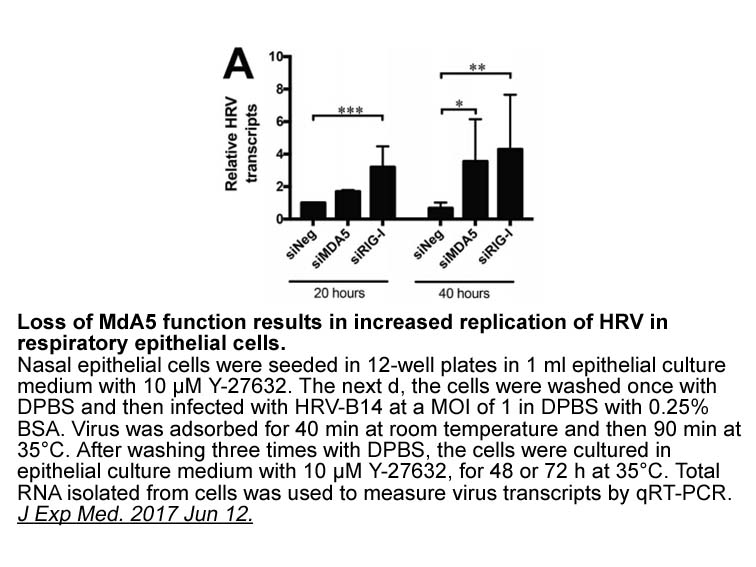Archives
The functional observations from the present study are
The functional observations from the present study are based on neoplastic Amfenac Sodium Monohydrate (HSY), and comparative expressions between normal salivary and pleomorphic adenoma tissues. However, there is a paucity of information on AhR expression and function in normal salivary gland, not neoplastic, cells. mRNA expression of AhR in human salivary gland was reported by Nishimura, Naito, Yokoi, and Drozdzik (2004) and Drozdzik et al. (2013), and in rats by Drozdzik, Wajda et al. (2014). Cellular localization in rat and human parotid glands was found to be similar, i.e. predominant AhR expression (defined by immunohistochemistry) in striated duct cells. Functional studies in rats under TCDD stimulation revealed a shift of AhR from cytoplasm to nucleus, accompanied by activation of AhR controlled genes, i.e. CYP1A1 and CYP1B1. These findings may suggest that AhR in salivary gland is functional, and may participate in the gland physiology and pathology. However, AHR expression was significantly lower in rat parotid gland in comparison to liver, most probably due to relatively high expression level of AHRR (Drozdzik, Wajda et al., 2014, Drozdzik, Dziedziejko et al., 2014), as demonstrated in the present study (comparison of HSY and MCF-7 cells).
Summarizing both in vitro and in vivo observations from the present study it can be stated that AhR system can play a role in neoplastic transformation in human parotid gland, giving an origin to pleomorphic adenoma. However, other detailed studies are required to verify findings of the present study.
Drozdzik, Dziedziejko et al., 2014), as demonstrated in the present study (comparison of HSY and MCF-7 cells).
Summarizing both in vitro and in vivo observations from the present study it can be stated that AhR system can play a role in neoplastic transformation in human parotid gland, giving an origin to pleomorphic adenoma. However, other detailed studies are required to verify findings of the present study.
Competing interests
Ethical approval
Funding
Acknowledgement
Basic biology of AhR
The aryl hydrocarbon receptor (AhR) is a basic helix-loop-helix/Per-Arnt-Sim (bHLH/PAS) transcription factor essential for adaptive responses to xenobiotics. As for all mammalian bHLH/PAS proteins, it has a uniform molecular design that is composed of three functional domains, including a highly conserved N-terminal bHLH domain, a pair of degenerate PAS repeats (designated PAS.A and PAS.B), and a poorly conserved C-terminal transactivation domain [1]. However, in contrast to the other bHLH.PAS proteins, AhR is the only member known to bind naturally occurring xenobiotics.
The ligand binding domain of the AhR resides in the PAS.B region, demarcated between amino acids 230 and 420 for the mouse AhR [2]. Structure activity relationship analyses suggested that the ligand binding pocket of the AhR is promiscuous and able to accommodate a large number of planar, hydrophobic compounds [3]. Polycyclic aromatic hydrocarbons (PAHs) and halogenated aromatic hydrocarbons (HAHs) are by far the most common classes of AhR ligands [4]. Pharmaceutical compounds such as the hepatoprotective  agent YH439 that fall outside the aromatic classification have also been shown to activate AhR, presumably by functioning as PAS.B binding AhR agonists [5].
In addition to xenobiotics, increasing evidence has pointed to the existence of endogenous AhR ligands [4]. In in vitro cell culture experiments, the AhR can be activated by exposing cells to hydrodynamic shear stress or shear-conditioned serum, or by switching adherent cells to suspension cultures and disrupting cell–cell contacts [6], [7], [8]. Together, these alternative AhR activation mechanisms provide further experimental models for investigating the endogenous functions of AhR, which may be distinct from those of xenobiotic mediated adaptive responses [8], although the molecular details underlying ligand-independent AhR activation have not been fully elucidated.
Unlike its heterodimeric partner protein Arnt (aryl hydrocarbon receptor nuclear translocator), the AhR possesses both nuclear localization (NLS) and nuclear export (NES) sequences, and is continuously shuttled between cytoplasm and nucleus. In the latent state (i.e. ligand unbound state), the AhR is localized predominately in the cytoplasm of the cell and associated with a dimer of Hsp90 (heat shock protein 90) and other scaffold proteins such as 23kDa heat shock protein p23, and immunophilin-like AhR interacting protein AIP (also known as XAP2 or Ara9). The cytosolic AhR complex has also been reported to interact with a number of other cytosolic proteins including kinome chaperone Cdc37 and the non-receptor tyrosine kinase Src [9], [10] (see below).
agent YH439 that fall outside the aromatic classification have also been shown to activate AhR, presumably by functioning as PAS.B binding AhR agonists [5].
In addition to xenobiotics, increasing evidence has pointed to the existence of endogenous AhR ligands [4]. In in vitro cell culture experiments, the AhR can be activated by exposing cells to hydrodynamic shear stress or shear-conditioned serum, or by switching adherent cells to suspension cultures and disrupting cell–cell contacts [6], [7], [8]. Together, these alternative AhR activation mechanisms provide further experimental models for investigating the endogenous functions of AhR, which may be distinct from those of xenobiotic mediated adaptive responses [8], although the molecular details underlying ligand-independent AhR activation have not been fully elucidated.
Unlike its heterodimeric partner protein Arnt (aryl hydrocarbon receptor nuclear translocator), the AhR possesses both nuclear localization (NLS) and nuclear export (NES) sequences, and is continuously shuttled between cytoplasm and nucleus. In the latent state (i.e. ligand unbound state), the AhR is localized predominately in the cytoplasm of the cell and associated with a dimer of Hsp90 (heat shock protein 90) and other scaffold proteins such as 23kDa heat shock protein p23, and immunophilin-like AhR interacting protein AIP (also known as XAP2 or Ara9). The cytosolic AhR complex has also been reported to interact with a number of other cytosolic proteins including kinome chaperone Cdc37 and the non-receptor tyrosine kinase Src [9], [10] (see below).